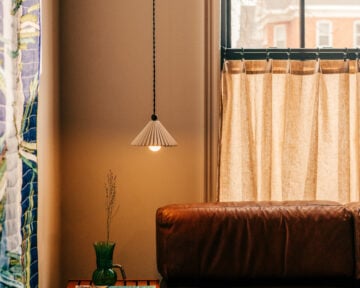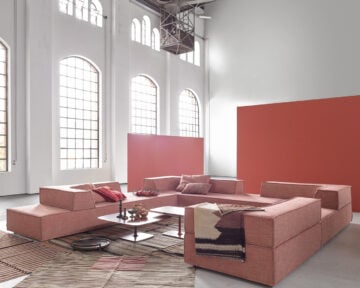A New AGO Is Born

The AGO reveals design for a major expansion: it’s all electric, biophilic and very cool.
The Dani Reiss Modern and Contemporary Gallery will increase the size of the AGO by 40,000 square feet with 13 galleries over five floors. “To give you some scope, the Whitney has 45,000 square feet of gallery space,” says Stephen Jost, CEO of the AGO. The expansion is, in part, funded by a $35 million gift from art collector Dani Reiss, who is Chairman and CEO of Canada Goose and member of the Order of Canada.
The design, revealed this week, shows a subtle, stepped-back structure tucked behind the main Gehry-designed museum. A star trio of architectural firms — Diamond Schmitt, Selldorf Architects and Two Row Architect — came together to successfully bid on the landmark building. The gallery was on the hunt for teams of executive, design and indigenous architects to present their vision together complete with sub-contractors at the ready.
But where will it go? “There is a loading dock between the AGO and OCAD, its tucked behind,” says Jost. “Once we realized that we could keep it and start the building on floor two, we also knew we didn’t need to build spaces like entrances, and gift shops. “I like to say it’s just two elevators, staircases, four electrical closets and gallery space.” The AGO expansion will connect to the existing one in four locations with much attention spent to circulation throughout.
“The [team] knew instinctively that it had to be set back with a light touch on the Gehry and Alsop buildings. A third expressionist thing would not be a good thing,” says Jost. “It’s not a big sheer curtain wall. The forms are broken up and stepped back.”
The quieter design lends itself to its thoughtful vision. The building will be carbon-neutral, all electrically powered, and biophilic. It’s also going after CAGBC Zero Carbon Operating Building certification and will be built to Passive House standards.

The Dani Reiss Modern and Contemporary Gallery, view from intersection at Dundas Street West and McCaul Street.
Brian Porter of Two Row Architect is leading consultations with Indigenous leaders including Chief R. Stacey Laforme of the Mississaugas of the Credit First Nation (Tkaronto’s Host Nation).
Adaptability, accessibility, relevance, zero carbon and inclusivity are top of mind for the AGO expansion. “The design integrates craft, cultural narratives, and the values of Indigenous peoples that can contribute to a curriculum of learning, sharing, healing, and celebrating. This is achieved through three key indigenous values: Adaptability, Biophilia and Kinship,” says Porter.
The museum consciously connects to the place it occupies. “There are windows looking east and looking west, a couple points where you see north and the terrace looks south. This came out of Brian reminding everybody that touching base with the cardinal points grounds you,” says Jost.

Interior view of the Dani Reiss Modern and Contemporary Gallery on sixth floor.
As far as programming goes, the Dani Reiss Modern and Contemporary Gallery will show a range of media, and will reflect Toronto’s diversity. Everything from painting and sculpture to works on paper and photography (a growing area in the gallery’s collection) and new media. “After 1900 is the only restriction,” says Jost.
Of the 13 galleries, the smallest ones are 1100-square feet while others at 3000-4000 square feet can be subdivided as needed. The biggest difference between the gallery spaces will be ceiling heights with some at 24 feet and others significantly lower for a more intimate scale when showing smaller works.
The museum’s exterior, expected to be terra cotta, will add to its conversation with the existing structure.“The Gehry blue box is the colour of the sky on a sunny day. The colour of the new building will likely be the colour of the sky on an overcast day.”
Pending approvals, construction is expected to start in 2024 with EllisDon as the project Construction Manager.

Interior view of the Dani Reiss Modern and Contemporary Gallery gathering space at sixth floor gallery entry.
Renderings of the AGO Expansion project courtesy of Rendering by Play-Time, courtesy of Art Gallery of Ontario, Diamond Schmitt, Selldorf Architects and Two Row Architect.










